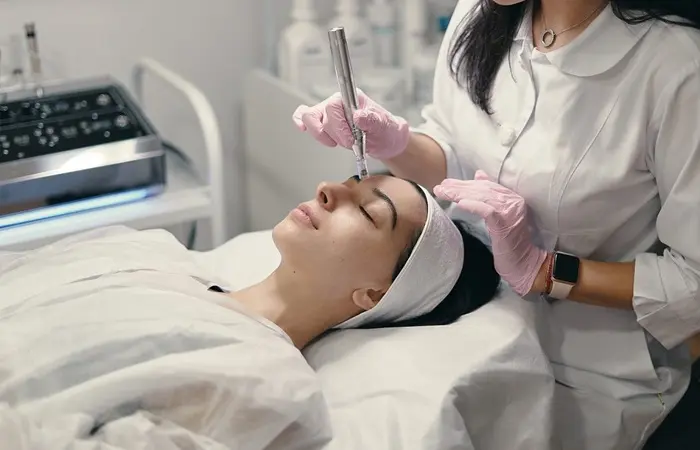A micro facelift, also known as a mini facelift or minimal access cranial suspension (MACS) lift, is a surgical procedure designed to rejuvenate the face with less invasiveness compared to traditional facelift techniques. This article explores the details of what a micro facelift entails, its benefits, candidacy criteria, recovery process, and potential risks involved.
Understanding the Micro Facelift Procedure
A micro facelift focuses on improving visible signs of aging in the mid-face and lower face regions through smaller incisions and targeted tissue repositioning. Surgeons typically use advanced techniques to lift and tighten underlying facial tissues, aiming to achieve a more youthful appearance without the extensive downtime associated with traditional facelift surgeries.
Surgical Techniques and Approaches
Micro facelift procedures vary in technique but generally involve minimal incisions strategically placed to minimize scarring and reduce recovery time. Surgeons often utilize specialized instruments and advanced suturing methods to lift sagging facial tissues, enhance facial contours, and achieve natural-looking results.
Anesthesia and Operating Room Considerations
The procedure is usually performed under local anesthesia with sedation or general anesthesia, depending on the extent of surgery and patient preferences. Operating room settings are optimized for patient safety and comfort, with surgical teams trained in microsurgical techniques for precision and optimal outcomes.
See Also: What Is Micro Plastic Surgery?
Benefits of a Micro Facelift
Patients considering a micro facelift are often attracted to its numerous benefits, which include:
Minimal Scarring and Faster Recovery
Due to smaller incisions and less tissue manipulation, scarring is typically minimized, and recovery time may be shorter compared to traditional facelift techniques. This appeals to individuals seeking facial rejuvenation with reduced downtime.
Natural-Looking Results
Micro facelift procedures are designed to deliver subtle yet noticeable improvements, preserving facial expressions and contours while addressing signs of aging such as sagging skin and deep folds.
Customized Treatment Options
Surgeons can tailor the procedure to each patient’s unique facial anatomy and aesthetic goals, allowing for personalized treatment plans that address specific areas of concern.
Candidate Considerations for Micro Facelift
Not every individual seeking facial rejuvenation may be an ideal candidate for a micro facelift. Key considerations include:
Age and Skin Condition
Candidates typically range in age from their late 30s to 60s, although suitability is assessed based on skin elasticity, overall health, and aesthetic goals. Younger patients with early signs of aging may benefit from less invasive procedures or alternative treatments.
Realistic Expectations
Understanding the limitations and expected outcomes of a micro facelift is crucial. Candidates should have realistic expectations regarding the degree of improvement achievable and potential risks associated with surgery.
Medical History and Lifestyle Factors
A comprehensive medical evaluation helps determine candidacy, considering factors such as smoking habits, pre-existing medical conditions, and lifestyle choices that may impact surgical outcomes and recovery.
Recovery and Post-Operative Care
Following a micro facelift, patients can expect a structured recovery period involving:
Initial Healing Phase
Swelling and bruising are common immediately after surgery, gradually subsiding within the first week. Patients are advised to follow post-operative care instructions provided by their surgeon to promote healing and reduce discomfort.
Long-Term Results and Maintenance
Optimal results from a micro facelift may become evident as swelling resolves and tissues settle into their new contours over several weeks to months. Long-term maintenance often involves sun protection, skincare routines, and periodic follow-up appointments with the surgeon.
Potential Risks and Complications
While considered a safe procedure when performed by a qualified surgeon, a micro facelift, like any surgical intervention, carries potential risks, including:
Infection and Wound Healing Issues
Risk of infection is mitigated through sterile surgical techniques and post-operative care protocols. Proper wound healing is crucial to minimizing scarring and achieving satisfactory outcomes.
Temporary Numbness and Sensation Changes
Some patients may experience temporary numbness or altered sensation in treated areas, which typically resolves as nerves regenerate during the healing process.
Unsatisfactory Aesthetic Outcomes
Despite meticulous planning and execution, aesthetic results may not fully meet patient expectations. Clear communication between surgeon and patient regarding desired outcomes helps minimize dissatisfaction.
Conclusion
In conclusion, a micro facelift offers a viable option for individuals seeking facial rejuvenation with reduced invasiveness and enhanced recovery compared to traditional facelift procedures. By understanding the procedure’s nuances, benefits, candidacy criteria, and potential risks, patients can make informed decisions in collaboration with qualified cosmetic surgeons. Always consult with a board-certified plastic surgeon to determine the most suitable treatment plan based on individual needs and aesthetic goals.
Related topics:

